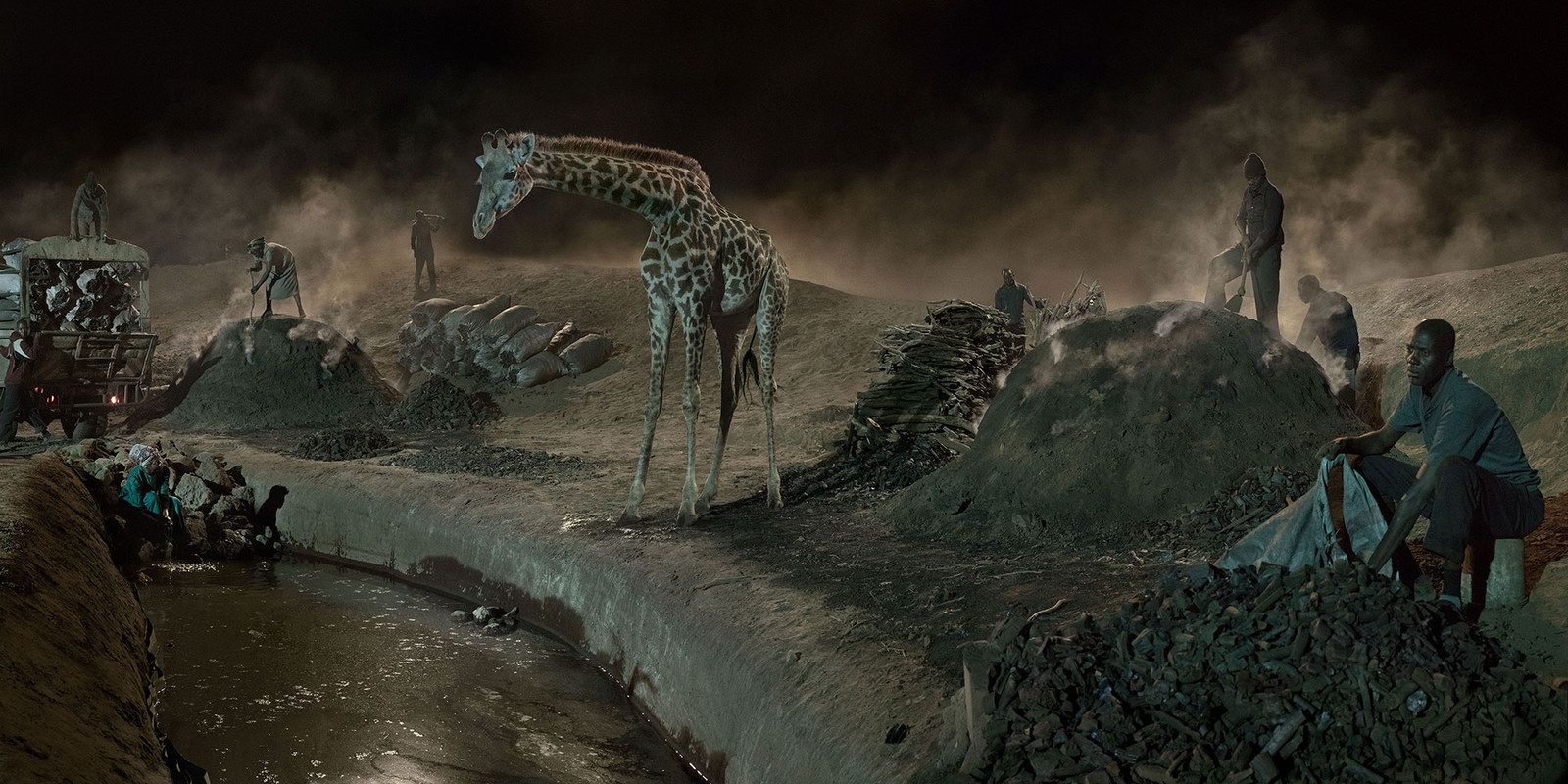
Photographer Nick Brandt has spent years working in East Africa, documenting the stark contrast between the region's natural beauty and the devastating impact of humans on the environment.
Since 2005, Brandt has published six books on the theme of vanishing wildlife and has been the subject of many solo exhibitions in galleries and museums around the world. In 2010, Brandt took his work further by helping to launch the Big Life Foundation, a nonprofit conservation organization that enlists over 200 local rangers to protect 1.6 million acres in Kenya and Tanzania.
His new book, This Empty World, visualizes the landscapes of East Africa as places of extreme environmental stress, where wild beasts roam the industrialized and polluted lands that were once theirs. Each picture is meticulously blended from two original images, each shot on the exact same spot weeks apart — the results are a surreal and haunting vision of Earth's wild past and the dark future we may be heading toward if nothing changes.
Here, Nick Brandt speaks to BuzzFeed News about the concepts behind these pictures and describes a world where wildlife falls victim to humanity's disregard for the environment.
What are the themes you address in This Empty World?
This Empty World focuses on the escalating destruction of the African natural world at the hands of humans, showing a world where, overwhelmed by runaway development, there is no longer space for animals to survive. The countries of East Africa, where this series was photographed, are one of the hot spots for this population explosion. All those people have to live somewhere.
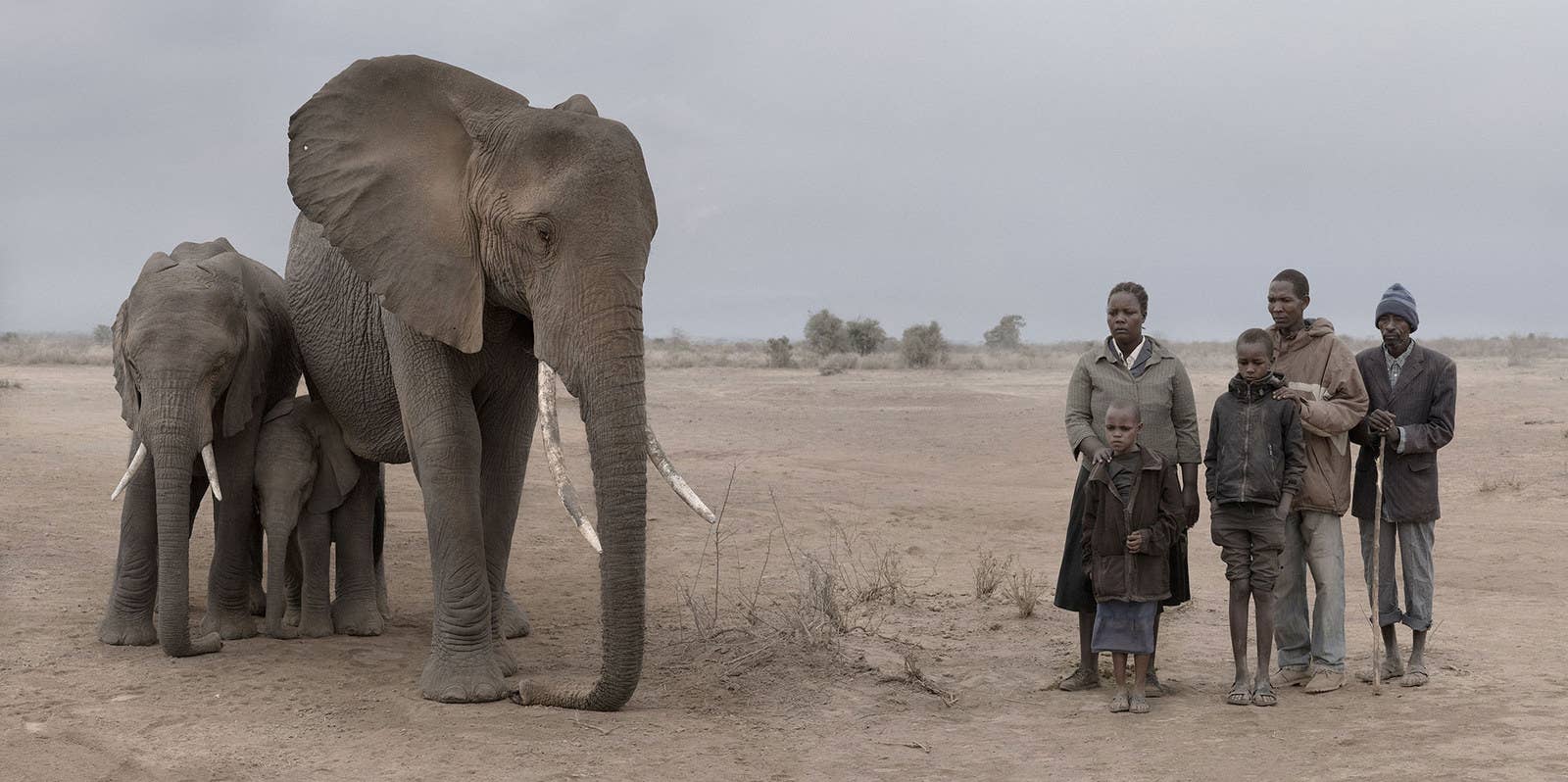
Environmentalists working in East Africa recognize that this is really one of the biggest, most dramatic reasons for such radical biodiversity loss. There is almost no park or reserve big enough for most animals to live out their lives safely. And outside of those often surprisingly small areas, the animals are being squeezed out and hunted down. It’s reaching the point where it’s unlikely that any large mammal can survive on unprotected land.
So what you see in these photos is, for me, symbolic of this invasion of the remaining natural wilderness by humans, as the animals are wiped out in the rapidly decreasing number of places they can live.
Can you describe the relationship between the humans and the wildlife in these pictures?
Environmental degradation will almost always affect poor rural people the most, due to the exhausted natural resources upon which they rely. The real villains — the majority of politicians, industrialists, and their largely self-serving kind — are all off camera. The people in the photos are helplessly swept along by the relentless tide of “progress.” But they are never portrayed as the aggressors in the photos, because they’re not.
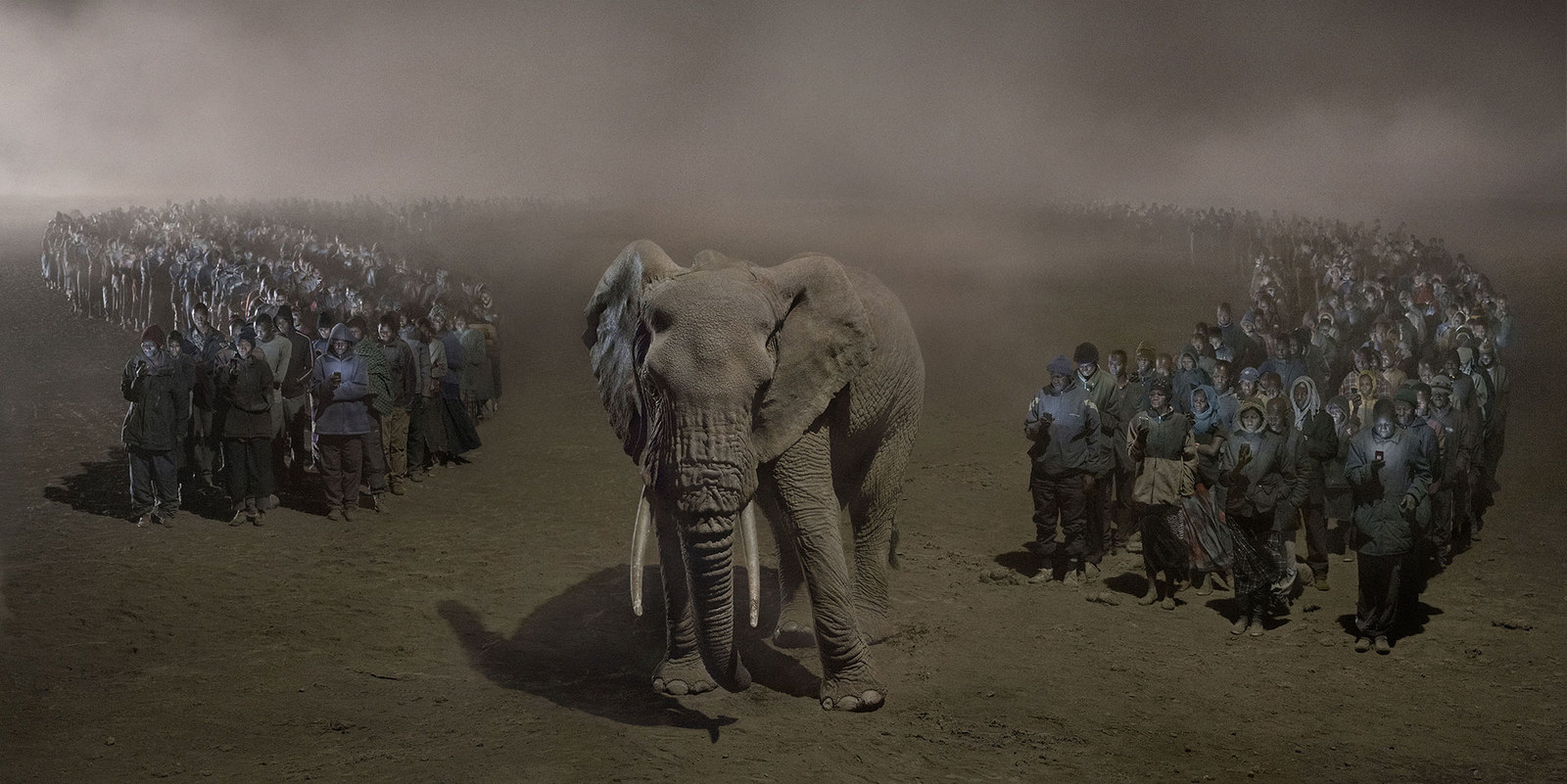
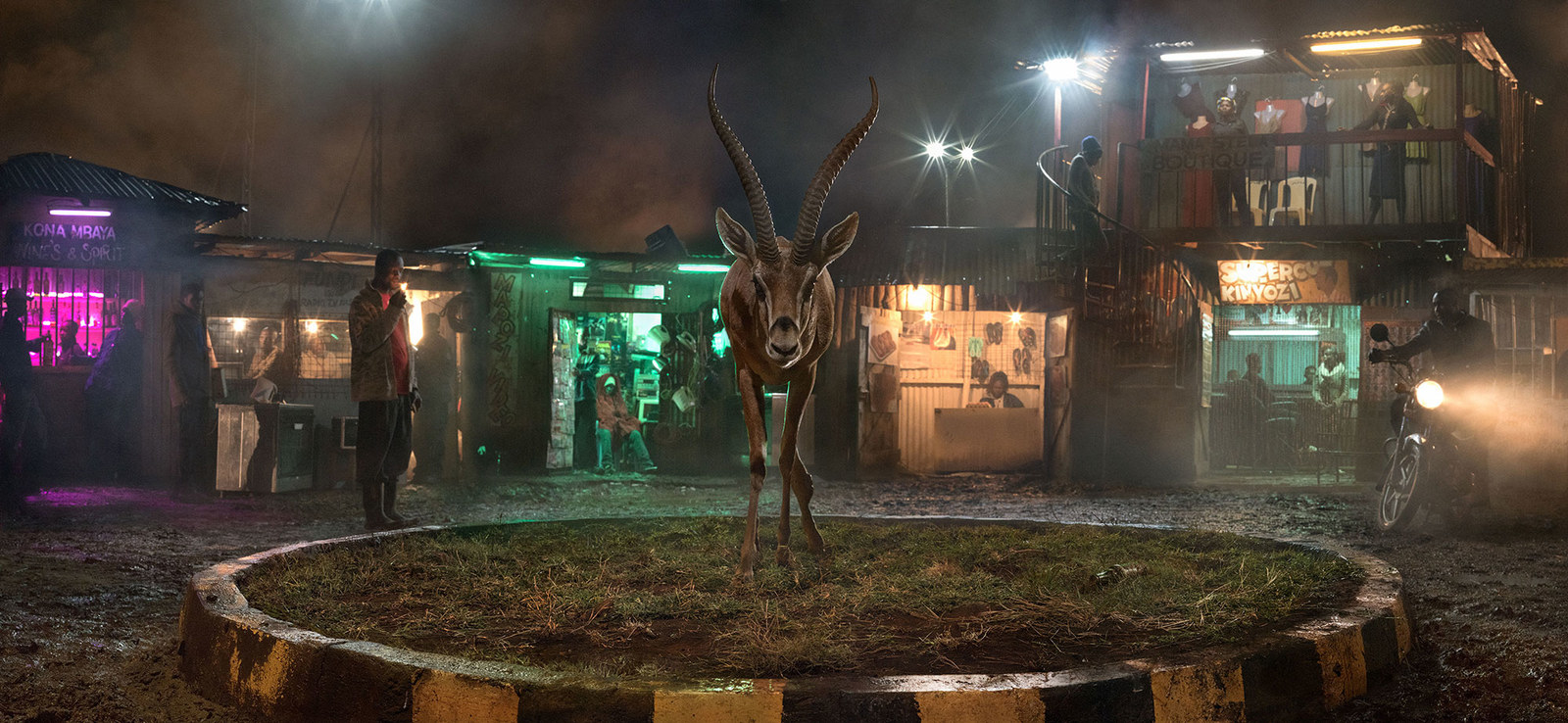
Many Africans would justifiably say that Western societies destroyed most of their own natural world centuries ago in the interests of economic expansion, and that in Africa, now it is their long overdue turn to economically grow. But protection of the environment and economic benefit can go hand in hand.
In many areas of East Africa where these animals do still exist, ecotourism is often the only significant source of long-term economic benefit for the local communities. Take away the animals, and there is usually little left of economic value. Somewhere like Kenya, the tourism industry — the second-largest sector of Kenya’s economy — would collapse without those animals. Few would come visit a world of livestock and dust.
Are the people in these pictures actors?
The people are drawn from local communities and beyond. They are not actors. In fact, I very much wanted the people to feel natural, unposed. So I would put them roughly in place in front of camera, and then just wait until they were so relaxed, or bored, that they were no longer aware when I was photographing them.
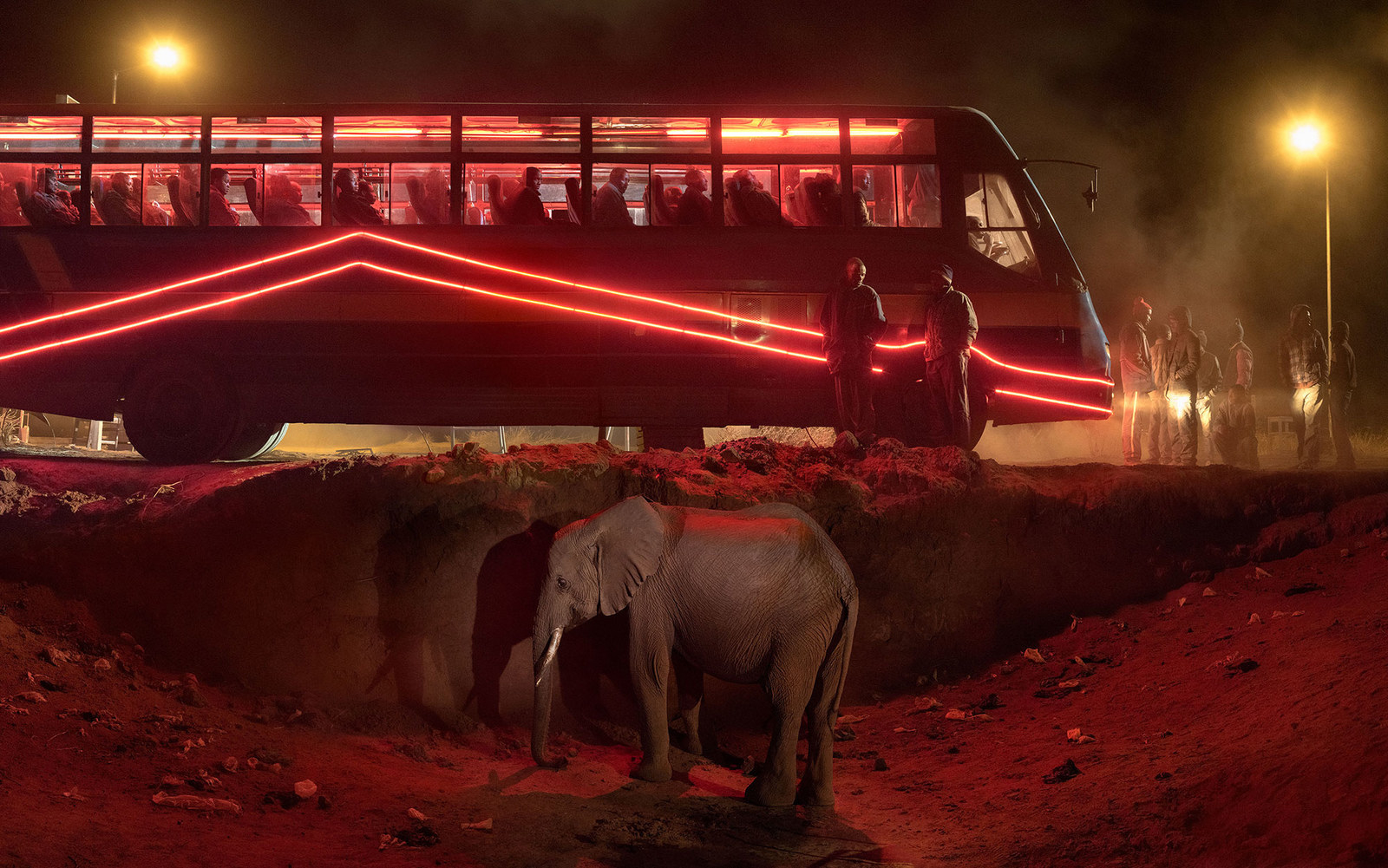

How much of each picture is photographed in reality and how much is produced in post?
I’m glad you asked this question because of course, most people initially think that in this day and age of ubiquitous photoshop, that I probably photographed the animals and then composited in preexisting locations from somewhere else. In reality, almost every photograph is a combination of two moments in time, captured weeks apart, almost all from the exact same locked-off camera position.

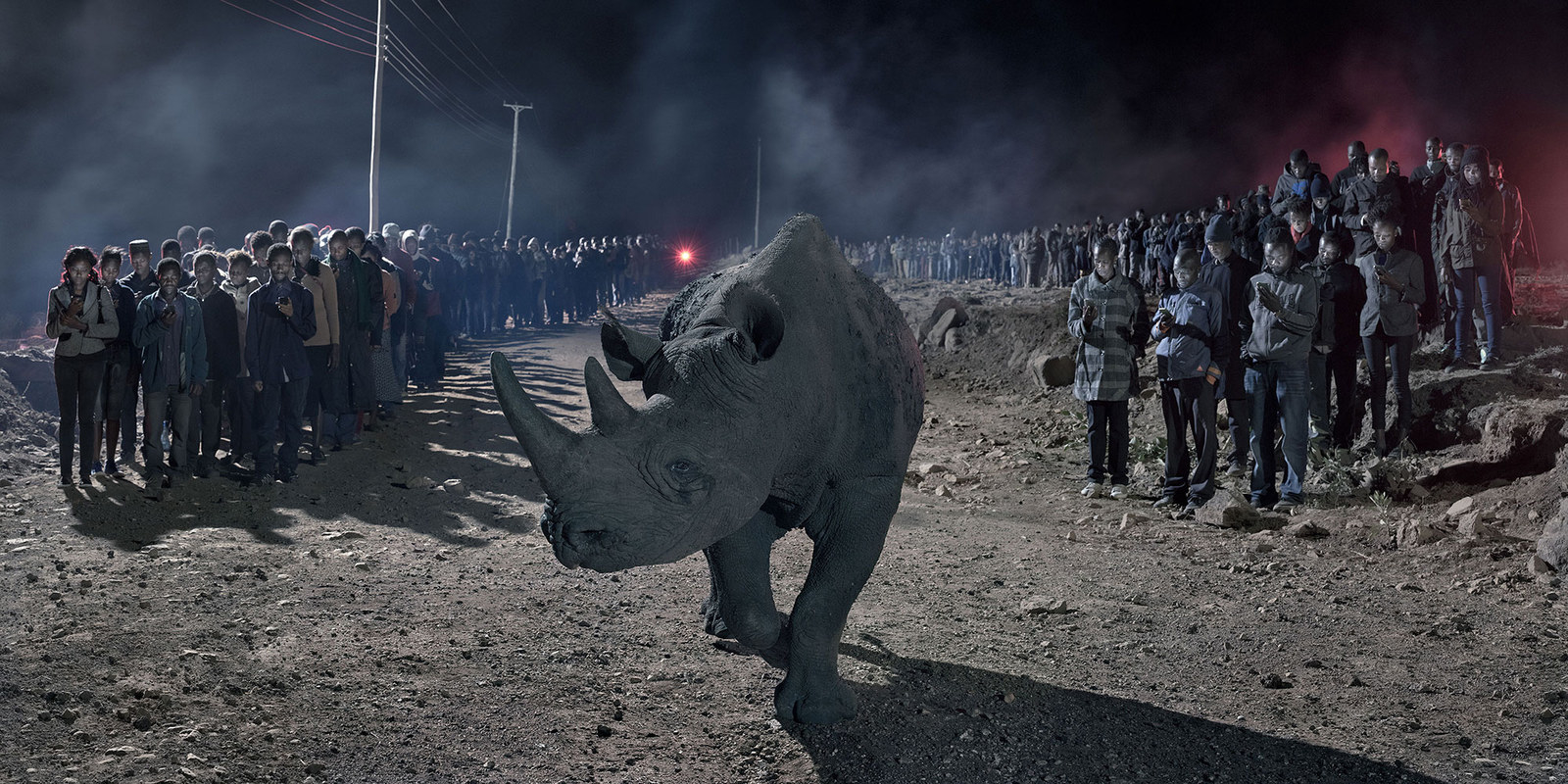
The images were all photographed on unprotected, populated, and usually very eroded Maasai ranch land in Kenya, often just a few hundred meters from villages and roads. Initially, a partial set is built and lit. Weeks follow, while the animals that inhabit the region become comfortable enough to enter the frame. Once the animals are captured on camera, the full sets are built.
A second sequence is then photographed with full set and cast. The final large-scale prints are a composite of the two elements. After the sets were removed, all their elements were recycled with almost zero waste. No evidence of the shoot now remains in the landscapes.
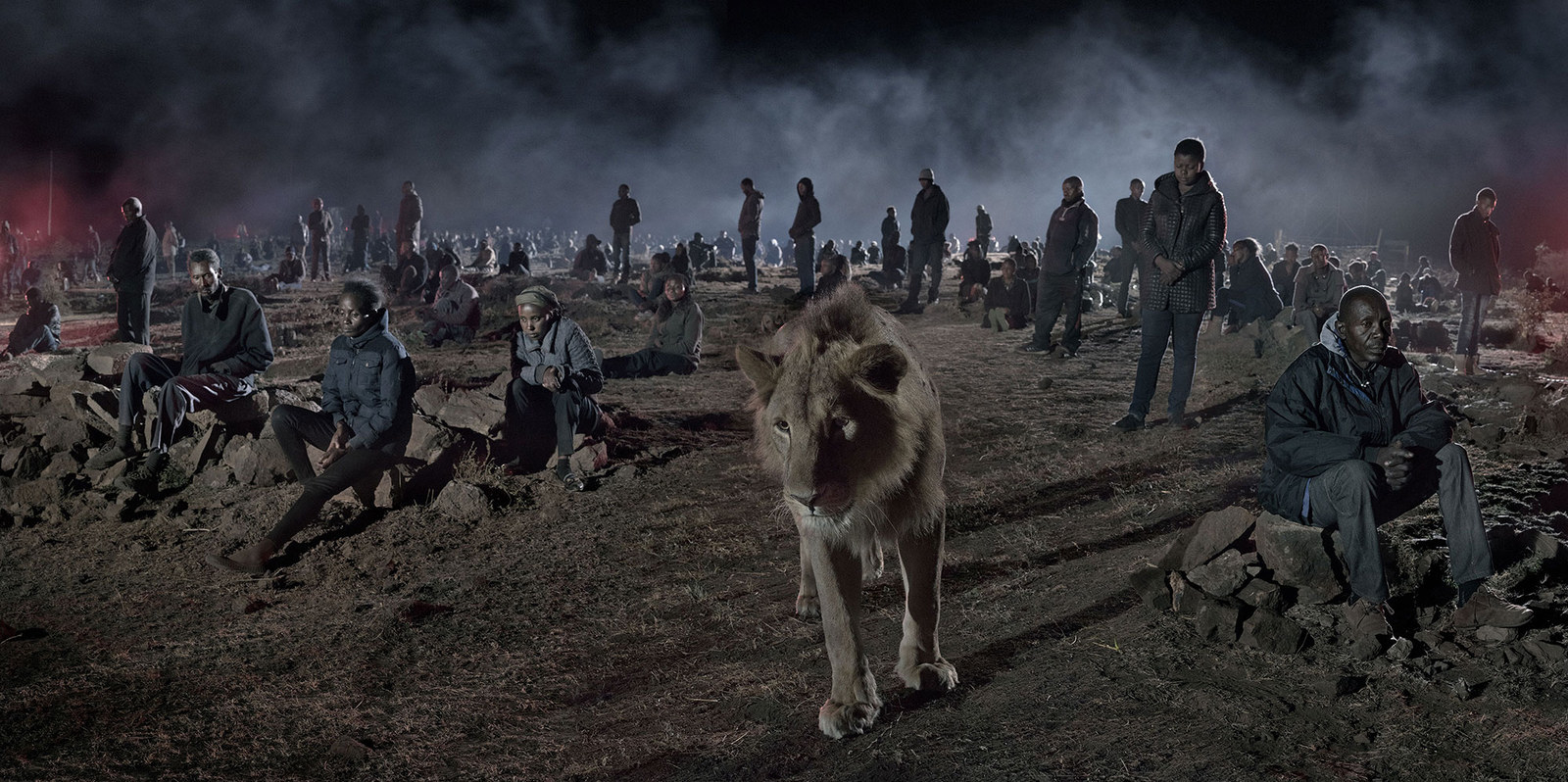
Do you consider yourself an optimist or a pessimist when it comes to the environment?
As environmentalists I know across Africa have attested, this vision, albeit a symbolic one, is a realistic depiction of the rapid disappearance of the natural world in significant parts of Africa.
However, I wouldn’t be taking these photos if I didn’t think there was some kind of hope, at least in some parts of the continent and world. The animals in these photos, approaching two years on, are probably all still alive.
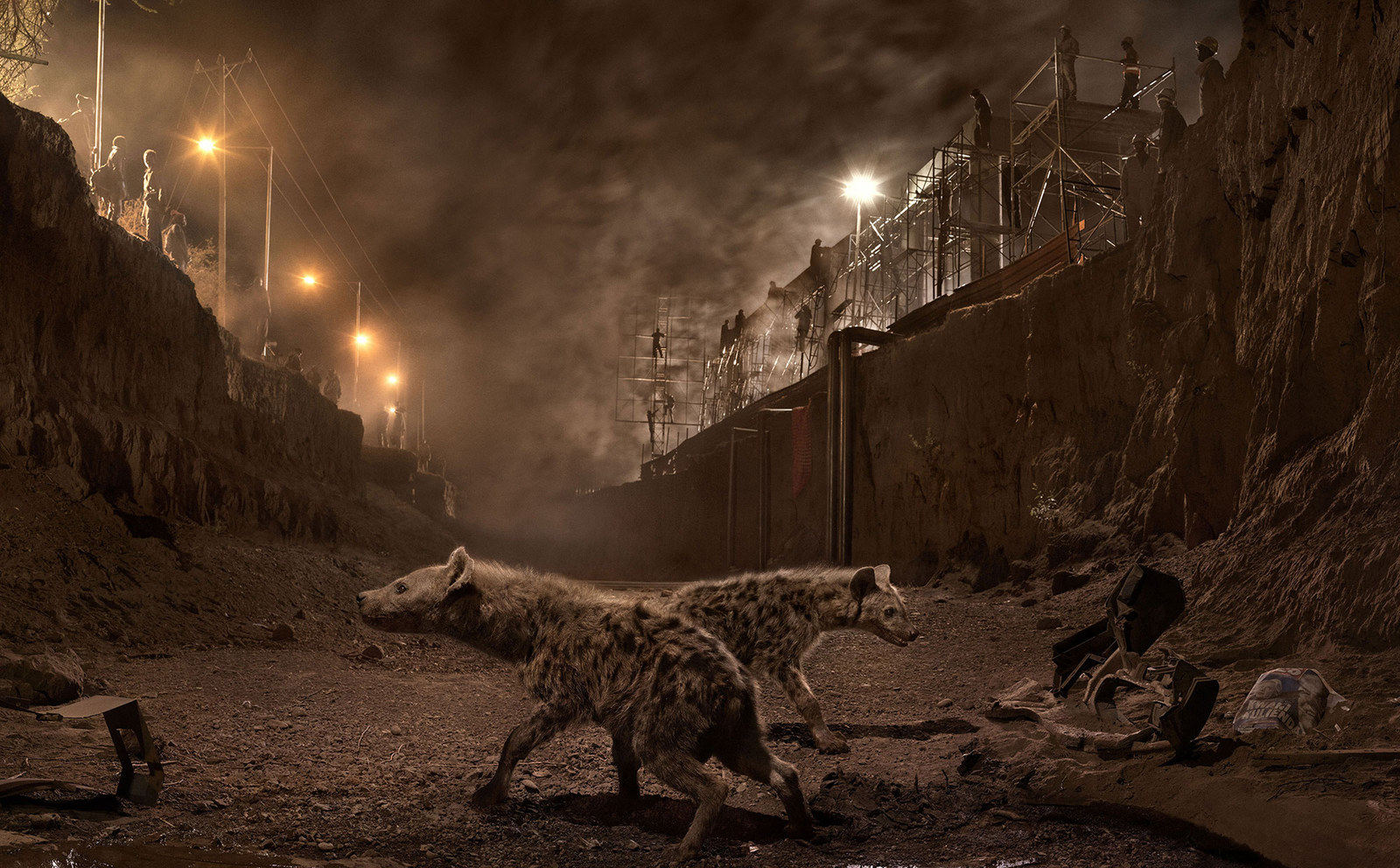
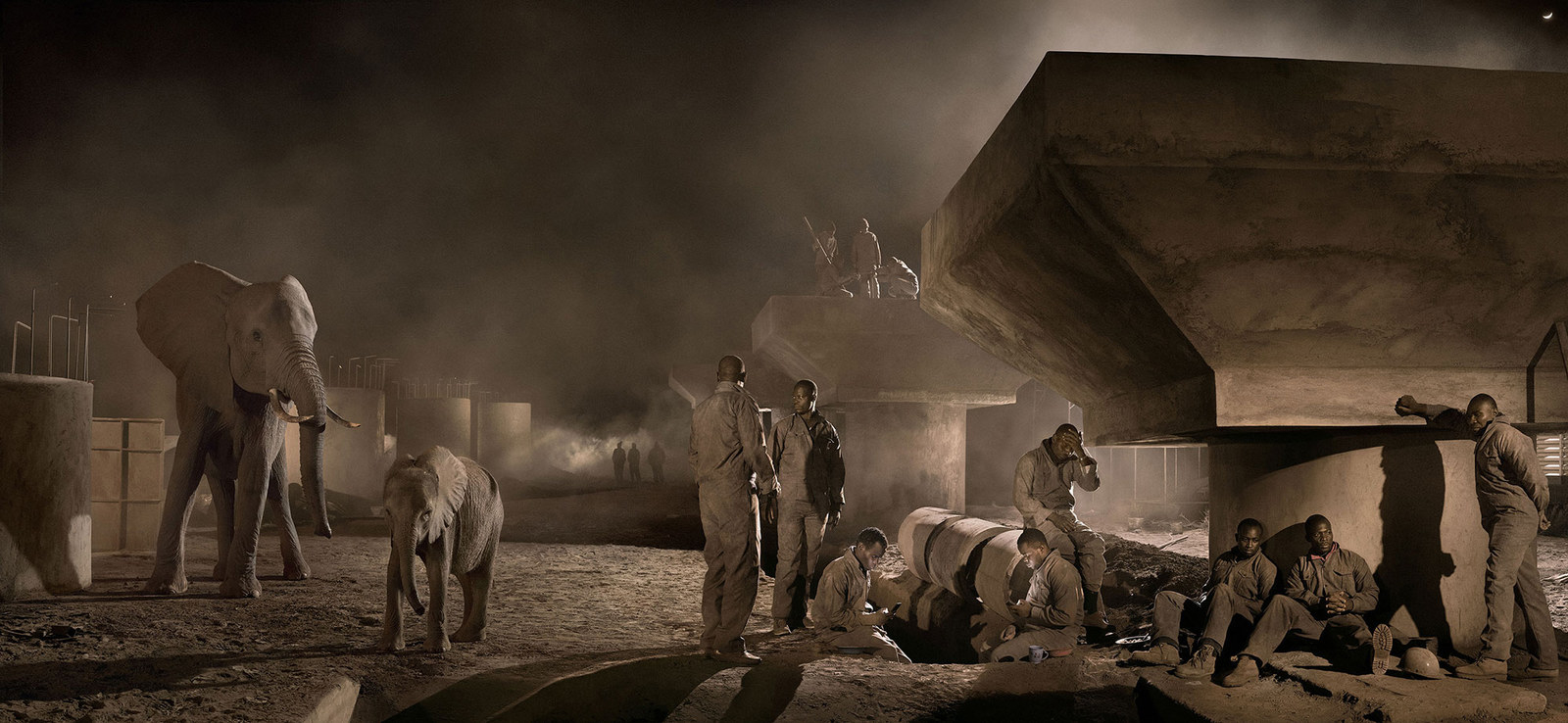
So far, the record of humans changing their ways is pretty piss-poor. We are living through the antithesis of creation right now. It took hundreds of millions of years to reach a place of such wondrous diversity, and then just a few shockingly short years, an infinitesimal moment in time, to annihilate that.
If we don’t radically correct our present course, yes, we have gone too far. But that doesn’t mean to say that we don’t all do our damnedest in ways both big and small to mitigate the damage.
What do you hope people will take away from This Empty World?
That the destruction of the natural world is far more complex than we think, far beyond issues such as poaching. That the East Africa of our imaginations — a romanticized view of vast expanses of unspoiled wilderness — is sadly outdated. That in the destruction, we hurt ourselves as well in the process.
